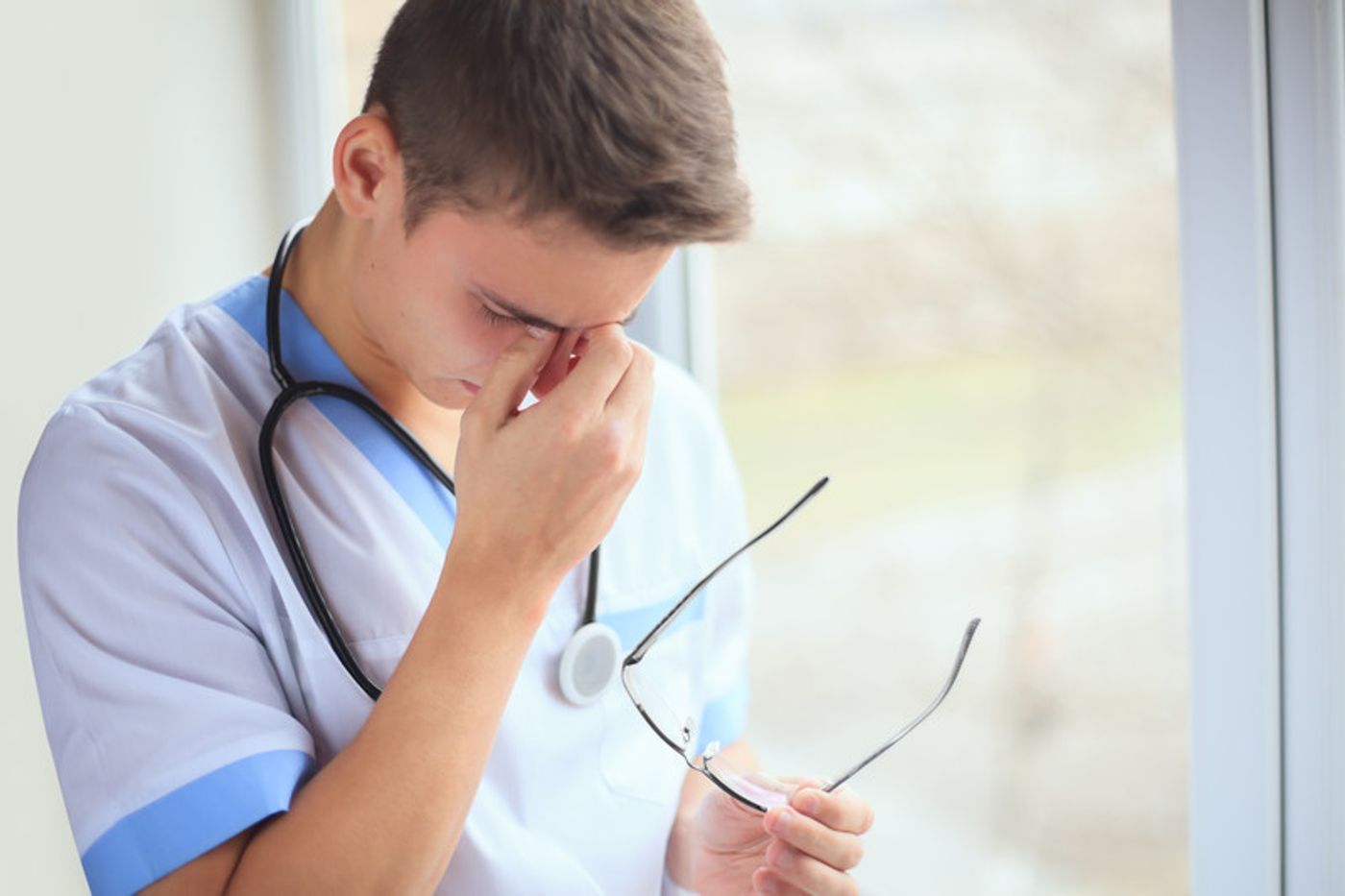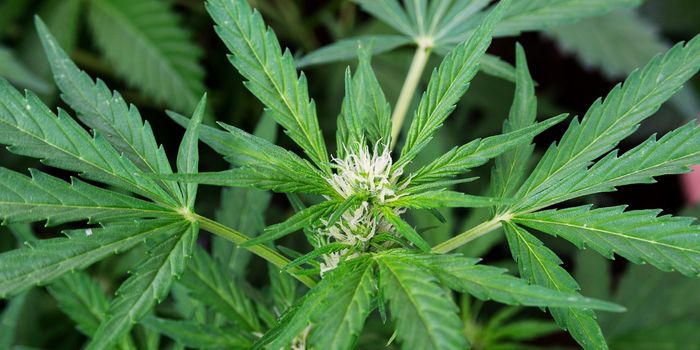An emergency room resident was suffering from depression. She hadn’t spoken to many people about it, but it finally got so bad that she brought it up with her resident program director. She told him she started to see a psychiatrist and began taking SSRIs. The program director just laughed. “You’d be surprised that all your classmates are on SSRIs,” he said.
“I think it’s an open secret,” said epidemiologist
Douglas Mata, who told LabRoots that story.
Early career doctors suffer from much higher levels of depression compared the general population. These physicians work long hours that involve intensive on-the-job training. They are held at low rank within their medical team, yet given a high level of responsibility.
A number of studies have looked at depression among medical residents. Almost all of them found higher levels of depression in early career doctors than the general population. The exact reasons, however, are still unclear.
Mata is a resident physician in pathology who has up close and personal experience with these issues. When he was in grad school, his physician roommate committed suicide. Now, a large portion of his friends in the field struggle with depression. It was a combination of these factors that led him to study depression among physicians.
He wanted to know the exact percentage of early career doctors who experience symptoms of depression. He additionally wanted to find whether there was a change in the level of depression over time.
Mata and a team of researchers combined data from 54 studies to find a more powerful and reliable estimate of the level of depression among these training doctors. The studies went back 50 years and looked for depression symptoms in over 17,500 residents around the world.
Once the data was equalized and tallied together, the researchers found that, on average, 28.8 percent of early career doctors screen positive for depression. The percentages in the studies ranged from 20 to 43 percent, depending on the type of instrument was used to measure depression.
The descriptive epidemiology study was published in the
Journal of the American Medical Association.
The researchers did not see a systematic difference in the rate of depression in different parts of the world. However, the U.S. and Europe were the most represented areas in the study, so they may not be able to make definitive statements about systems globally.
A person in the general population who is around the same age as the average medical resident (20s or early 30s) has an 8 percent chance of screening positive for depression, Mata said. “So, we’re looking at 29 percent versus 8 percent.”
While 29 percent was the average, “a single level like that isn’t enough to really capture the full nuance of the finding,” Mata said. Thus, the study presented a range. “Depending on what kind of instrument was used to measure depression, the number could be as low as 21 percent, which is still high, or as high as 43 percent, which is just crazy high.”
Even though Mata saw depression first-hand in residents, he was still surprised by the upper bound estimate. While the paper states the upper bound estimate for medical residents who screened positive for depression is 43 percent, that does not mean 43 percent met the criteria for major depressive disorder as assessed by a psychiatrist in a one on one interview. "It does, nonetheless, mean that those individuals have a high burden of depressive symptoms," Mata said. Regardless of whether a person meets the criteria of major depressive disorder, feeling symptoms of depression negatively affect a person's life and their ability to work.
IT’S ONLY GETTING WORSE
Doctors need intensive training, but the medical field cannot afford to have them depressed either. As many as
400 physicians commit suicide in the U.S. each year - the equivalent of at least one entire medical school.
The researchers additionally found a small, but significant, increase in the rate of depression since the 1970s. They checked 54 different data points and plotted their prevalence estimates versus time. The scientists created a linear model that shows a consistent 0.5 increase per year for the past 50 years.
The medical field has worked to put a hard cap on the number of hours a physician can work. They have limited how long each shift can be to 16 hours. Yet, none of these changes seem to have worked, either in reducing depression among residents or reducing errors.
"It’s a field where we’re still struggling to find a compromise," said psychiatrist
Srijan Sen, senior author of the study. "We don’t have enough evidence to say what the real answers will be," Sen said.
The healthcare system is completely unlike it ever was. "If someone trained in the 50s, 60s, or 70s came in today, he or she would have no idea what they were looking at," Sen said. There are new layers of complexity in terms of the electronic records, more charity duties, and different diagnosis's. The patients are sicker and have more chronic illnesses at once. In addition, a physician can never truly leave the hospital because they have the ability to plug into the Internet and do certain tasks at home. For instance, doctors can do charting, prescribe medication, order x-rays and even surgeries. So even if a doctor goes home, they can work past beyond their capped hours and take their work with them.
In medical school, future doctors train to care for patients. In residency, they often do completely different jobs. Many spend about 40 to 60 percent of their time doing clinical drudge work, which includes sitting in front of a computer, writing notes on one's patients, and receiving orders. Many spend less than 10 percent of their time at their patient's bedside. One could argue that the most rewarding aspect of medicine is actually being with the patient. So if a resident doesn't experience that, it may discourage them.
There needs to be a change in the ongoing structure of how physicians are trained, Sen said. In particular, he believes the medical field needs to make changes to offload some of the work residents are doing now. Especially, some of the non-educational work, such as transporting patients. Other people, such as nurse practitioners and senior physicians, could do some of that work. "We should be able to maintain the education and rigorous training for these doctors [while still allowing] them to live their lives and do what they need to do to prevent this really high level of depression we're seeing," Sen said.
The mental health of physicians has never been a priority. There has been a tradition in medicine that doctors should be able to hand anything. There are doctors who take pride in being up for 30 to 40 hours to help patients. "I think that has developed a culture that doesn’t acknowledge the problems of depression and mental illness," Send said.
ADDRESSING THESE FACTORS
"For us, we understand that the transition from medical school to resident can be significant,” said
Anthony Tobias, associate program director in the department of psychiatry at
Robert Wood Johnson Medical School. "Many move away from their homes. Many are on the verge of fulfilling a life-long dream. Many are given more responsibility and held to a greater level of accountability.
"Part of co-directing a residency is addressing all of these factors that are going to contribute to a resident assimilating into a new role.”
Residencies, in general, do a much better job at addressing physical ailments than psychiatric ailments. Yet, having this definitive number and evidence of the prevalence of depression should spur action to address the issue. "We may have to look at some things we have ignored, and look outside the box to see what may help our residency training," Tobia said. He believes the field should take a broader approach, and confront the problem as early as the interview process.
Residents tell Tobia they don't mind the work as long as there's an equal exchange of supervision. The focus is on work hours and things along the clinical realm, without the information that should be given with those hours. "Do teaching hours and supervising hours protect against service hours - or do service hours overload the residents?" Tobia asks.
Robert Wood Johnson Medical School is very lucky, Tobia admits. They are on the small side when it comes to residency. They only have six residents per year. Thus, they only have to address these problems in a half dozen individuals. This makes implementing strategy must easier.
The mental health of physicians affects both doctors and patients they’re treating. Researchers need to conduct further studies to identify all the different factors that lead to the symptoms of depression.
The publication of the paper draws much needed light to the issue. It serves as a sort of a call to action for the policy makers that the field needs to implement changes. People know what’s causing them to become depressed. The field needs to experience a bottom to top change of the healthcare education system, which is a really tall order.
Sources: Interview with
Douglass Mata, interview with
Srijan Sen, interview with
Anthony Tobia,
press release via
University of Michigan and
Newswise,
study published in the Journal of the American Medical Association,
"Physician Suicide" paper via Medscape










